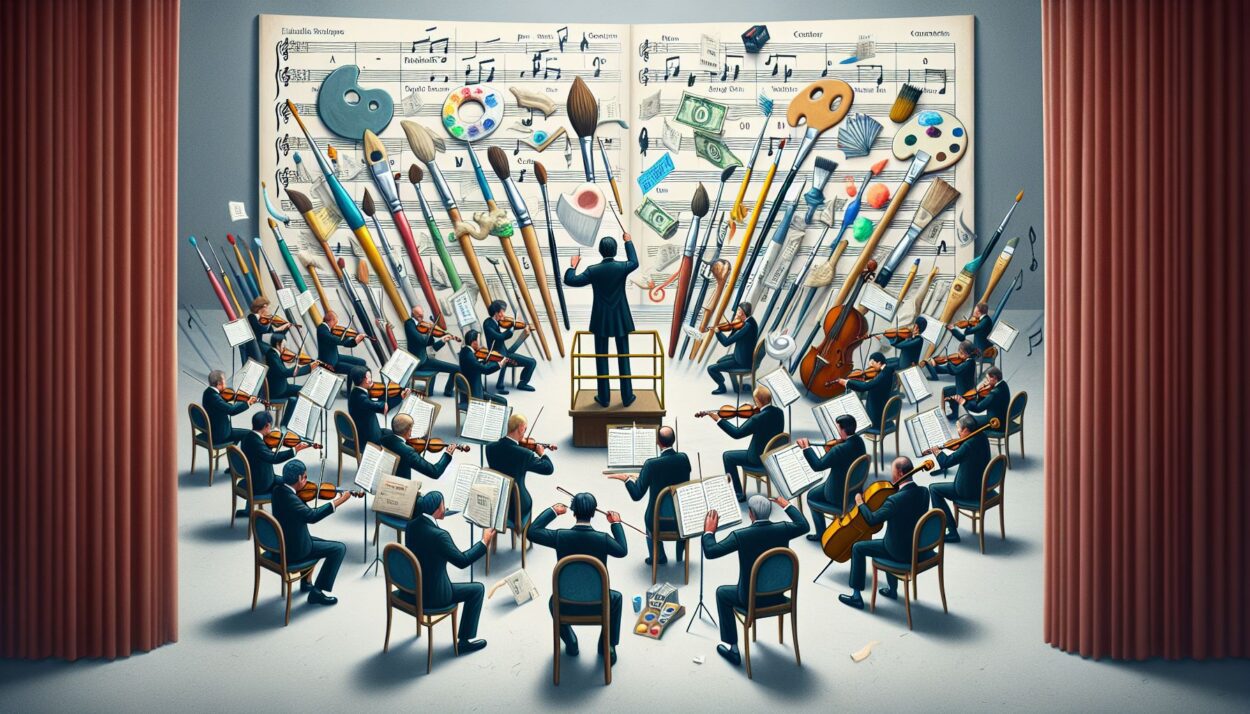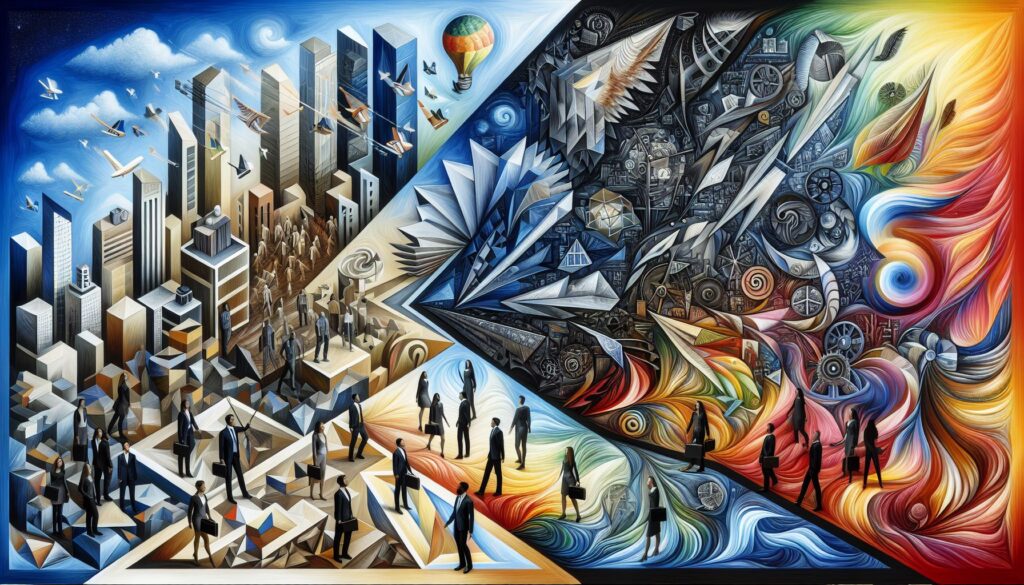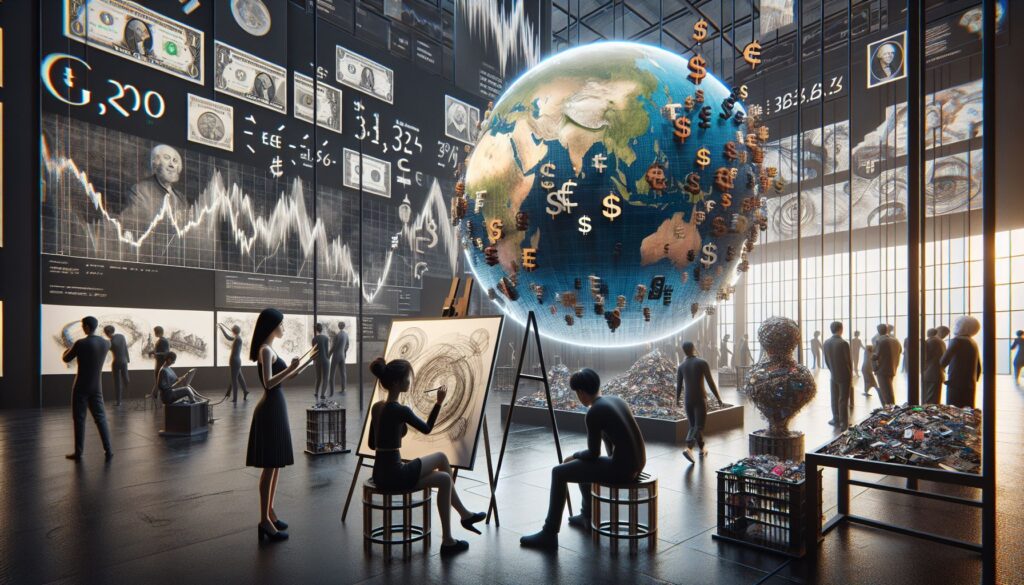As the morning sun breaches the skyline, it casts its warm hues upon the Earth, breathing life into the serene canvas of the dawn. This canvas, beguiling and bountiful in its simplicity, is much akin to the contemporary art market. It thrives on a rich tapestry of creativity and business acumen, each strand interwoven to form a fascinating panorama of both the art and business domains.
The buzz of the art world, in recent years, has been underscored by the emergence of electrifying new artists, disruptive digital platforms, and paradigm-shifting trends in art appreciation and acquisition. This confluence has reshaped the face of the global art market, birthing an intricate dance between aesthetics, innovation, and business.
Emerging artists such as Njideka Akunyili Crosby and Kehinde Wiley have stirred the art landscape with their unique styles and powerful narratives. Crosby’s intricate collages blend traditional African motifs with Western elements, bridging a chasm between identities. In contrast, Wiley’s bold portraits challenge conventional power dynamics, pocketing radical reinterpretations of classical paintings. Their works, garnering hefty sums at auctions, underscore the critical role entrepreneurial spirit plays in the recognition and success of an artist.
On a different note, street art, once considered the rebel child of the art world, has found its way into esteemed auction houses and private collections. The enigmatic graffiti artist Banksy, embodying this trend, has managed to blend anonymity with commercial triumph. His self-shredding painting stunt at Sotheby’s auction speaks volumes about his subversive genius that not only critiques the institution of art but ingeniously leverages its mechanisms too. Street art’s commercial ascent signifies the market’s evolving openness to unconventional mediums, a testimony to art’s limitless boundaries and versatile business potentials.
Notably, the digital age has brought unprecedented shifts in the art business, such as the rise of online auction platforms and virtual galleries. Traditional behemoths like Sotheby’s and Christie’s have embraced digital modes, providing collectors a more accessible, democratised platform for art acquisition. Moreover, the digital sphere has created fertile ground for the thriving of NFT (Non-Fungible Token) art, where digital artists like Mike Winkelmann, best known as Beeple, are realizing astronomical sales figures.
Reflecting on these developments, it becomes evident the art market does not merely ride on talent. It is a carefully orchestrated suite, where strategic marketing, brand building, industry acumen, and trend-spotting play integral roles. This union between the artist and the business adept crafts the melody we call the ‘Art Business.’
Looking ahead, the potential shifts in the art business landscape seem abundant. The accelerated virtualization of the art market could further democratize art access, appreciation, and sales. The rise of art-tech companies, employing AI, VR, and blockchain technology, might revolutionize art valuation, provenance verification, and conservation. Trends like sustainable art could address wider socio-environmental issues, striking a chord with the environmentally-conscious buyers.
In sum, the tapestry of the contemporary art business is a vibrant kaleidoscope, mirroring the marriage between creative impulses and business strategies. As we stand on the precipice of the future, it becomes imperative to listen closely to the strains of this intricate symphony. As the market morphs and reinvents itself, only those agile enough to dance to its dynamic tune will truly hear its melody and leverage its rhythm.




